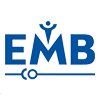


On Thursday November 8, 2007 Dr. Pamela Bhatti, Assistant Professor, School of ECE, Georgia Tech spoke on Cochlear Implants: Past, Present and Future. Dr. Bhatti's current research interests are in the general area of biomedical sensors and subsystems, bioMEMS, and microelectronics. Specifically, she is interested in implantable cochlear electrode arrays, vestibular prostheses, and the integration of controlled-release drug delivery technology with flexible neural recording/stimulating arrays.
Her speech gave a description of the ear and the function of cochlear implants, explaining that they are only used in patients with hearing loss in both ears. She briefly described the past and present of cochlear implants. Present systems typically use signals at several megahertz to communicate from external microphone circuitry to the receiver implanted in the cochlea and to power the implant. Post-surgery capabilities exist for Neural Response Telemetry which helps determine how the nerve is responding to the implant. The largest company is Cochlear Limited in Australia, and names used here are their device names. The other manufacturers (MedEl and Advanced Bionics) have similar devices. Dr. Bhatti said that the future of hearing improvement may include items from the following list that are either enhanced uses of devices that are already approved for usage or new research devices. These include:
- improvements in Electro-Acoustic stimulation to keep the patients low frequency hearing and supplement it by improving their high frequency hearing;
- improvements in BAHA Bone Anchored Hearing Aids;
- improvements in ABI Auditory Brainstem implants which connect directly to the auditory nerve;
- developing TIKI Totally Implantable Cochlear Implants;
- developing cochlear hair cell repair;
- and developing neurotropin delivery for treatment of neuron damage affecting the inner ear.
The EMBS Atlanta chapter is grateful to Dr. Bhatti for taking the time to give us her presentation.
On Thur Aug 2, 2007 we held a "planning/brainstorming" meeting for the Atlanta IEEE-EMBS chapter. We discussed possibilities of job fairs, lab tours, student activities, local outreach to K-12, hosting a regional biomedical engineering meeting, organizing a future meeting around the topic of "Building Bridges Between Clinicians and Engineers," and scheduling an expert speaker funded by the IEEE.
On April 23, 2007 Dr. Bill Hunt, Professor, School of ECE, Georgia Tech spoke about Acoustic Wave Biosensors for Molecular Recognition and Detection of Conformational Change. The presentation was given at Southern Polytechnic University.
Acoustic wave devices coated with a biolayer represent one biosensor approach for the detection of medically relevant biomolecules. In a typical application, the acoustic wave device is connected in an oscillator circuit, and the frequency shift Delta-f resulting from a biomolecular event is recorded. Work has included the use of Rayleigh wave surface acoustic wave devices for vapor phase detection as well as ZnO resonators and quartz crystal microbalance devices for liquid phase measurements. For most of the results presented the biofilm on the surface of the acoustic wave device consists of a layer of antibodies raised against a specific target molecule or antigen. Results were presented for the vapor phase detection of small molecules such as uranine, cocaine, TNT and RDX as well as liquid phase detection of small proteins, lipids and DNA. The data from these various experiments is the signature associated with the biomolecular recognition events; that is, Delta-f(t). Also presented were the results of the time-dependent perturbation theory work, which gives a potential method for resolving the acoustic wave biosensor signature into information relating to molecular structure changes during a molecular recognition event.
The IEEE EMB Society is grateful to Dr. Hunt for giving this presentation.
On Mon January 29, 2007, Dr. Rosana Esteller talked about recent developments in neural stimulation for control of epilepsy advanced by Neuropace. Dr. Esteller holds a Ph.D. in Electrical and Computer Engineering from Georgia Tech. She is currently employed by Neuropace, a company founded to design, develop, manufacture and market implantable devices for the treatment of neurological disorders by responsive brain stimulation. Information about Neuropace can be found at www.neuropace.com. The IEEE EMB Society is grateful to Dr. Esteller for giving this presentation.
Last updated April 6, 2022.
Webmaster: asdurey (at) ieee.org
